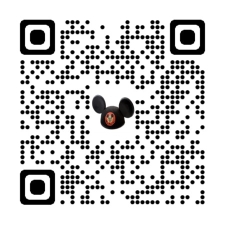Meet The Mountain View Machinists Who Helped Build Disneyland
ID:
TMS-5844
Source:
paloaltoonline.com
Author:
Linda Taaffe
Dateline:
Posted:
Status:
Current
In the summer of 1955, Disneyland opened its gates for the first time, marking the beginning of a new era in theme parks. An estimated 30,000 guests flocked outside the entrance starting as early as 2 a.m. waiting for a firsthand look at the $17-million park during opening day on July 17, according to various news accounts.
So what does the opening of an amusement park located on 160 acres of former orange groves more than 400 miles south in Anaheim have to do with the Peninsula? Lots.
Many of the iconic rides in the park were created in a small Mountain View machine shop operated by four machinists from Mountain View and Los Altos who had previously built torpedo launchers and marine steam engines at Sunnyvale’s Hendy Iron Works for the U.S. Navy during World War II.
Bill Hardiman, Andy Anderson, Ed Morgan and Karl Bacon founded Arrow Development just north of downtown at 243 Moffett Blvd. in 1946 and went on to create groundbreaking amusement park rides like nothing ever seen until that time. The company was behind building many of Disneyland’s original opening-day attractions, including the Tea Cups, the King Arthur Carousel, Mr. Toad’s Wild Ride and Snow White’s Adventures.
Arrow’s most notable achievement, however, was the development of Disney’s first roller coaster, the Matterhorn Bobsled ride, in 1959. The Matterhorn had a revolutionary design that paved the way for today’s modern steel roller coasters, replacing traditional wooden tracks. Bacon and Morgan, who engineered the ride, were both posthumously inducted into the National Inventors Hall of Fame earlier this year for designing “the world’s first tubular steel track roller coaster.”
Disney’s imagineers meet Mountain View’s machinists
Walt Disney’s intdroduction to Arrow’s machinists wasn’t exactly a chance meeting.
Arrow, which started out making truck parts and tools and performing machine work for Hewlett-Packard, had shifted toward building small carousels and other rides for the amusement park industry in the years leading up to the opening of Disneyland. This work led to the company’s collaboration with Disney.
Morgan reportedly read a newspaper article about Disney’s vision to build a first-of-its-kind “theme park” called Disneyland, which prompted him to reach out to Disney to see if he wanted a small stern wheel paddle boat that Arrow had built. Disney allegedly had no interest in the boat but became intrigued by the rides that Arrow was creating for other amusement parks.
In 1953, Disney contacted Arrow to help design and build attractions for his new amusement park. Mr. Toad’s Wild Ride was among their earliest collaborations. Disney Imagineer Bruce Bushman, who was assigned to help in the development of the theme park, reportedly provided Morgan a sketch of the “Mr. Toad” vehicle, and Arrow quickly fabricated a prototype body.
“I was the guy that made (rides) happen from the mechanical standpoint. Karl (Bacon) was the guy who did the math,” Morgan, a lifelong tinkerer and a self-taught engineer, said in the early 2000s while looking back on his career, according to the National Inventors Hall of Fame website.
This collaboration between Disney and Arrow lasted more than a decade, with Disney making frequent trips to Mountain View to check the progress of the rides.
Over the years, Arrow would become a key player in developing numerous rides at the park and was awarded multiple patents for its designs between 1953 and 1971. The company went on to build the Casey Jr. Circus Train, Dumbo Flying Elephants, Autopia, Alice in Wonderland and developed the vehicles and tracks for It’s a Small World, Pirates of the Caribbean, Adventure Through Inner Space and the Haunted Mansion.
The world’s first tubular steel roller coaster
The Matterhorn Bobsleds, inspired by Walt Disney’s visit to the Swiss Alps, remains among Arrow’s biggest engineering feats.
Disney wanted to create a ride that would make Disneyland guests feel like they were racing down icy slopes in a bobsled, so his team of Imagineers designed a 147-foot-high, 1/100 scale replica of the famous Matterhorn mountain in steel and concrete. To bring Disney’s vision to life, Arrow needed to create two intertwining 80-foot-high steel roller coaster tracks, according to the National Inventors Hall of Fame website.
Morgan and Bacon understood that conventional iron tracks could not be bent into a small enough radius to fit, according to the website, so they developed tubular steel tracks that could be bent precisely. The design laid the foundation for future innovations, like longer drops, loops, corkscrews and other features that were previously too dangerous or even impossible to create.
“I remember seeing children on the rides and seeing their smiles. But our main drive was to take challenges and find answers to them. That’s what made our eyes light up,” Morgan said in the early 2000s while looking back at the impact of his and Bacon’s design, according to the National Inventors Hall of Fame website.
Arrow becomes Disney’s in-house ride design team
After construction of the Matterhorn, Walt Disney Productions bought a third of Arrow Development so the company could serve as Disneyland’s in-house ride design team. It was during this time that the company moved to a larger plant on a 6-acre site at 1555 Plymouth St. in Mountain View’s North Bayshore Area. (Some might remember seeing roller coaster tracks and other amusement park rides in various states of progress as they passed the plant on Highway 101.)
In the early 1970s, Bacon and Morgan, the only remaining founders, sold their interests in the company, and by the 1980s Arrow had left Mountain View.
Attractions Referenced In This Article:





